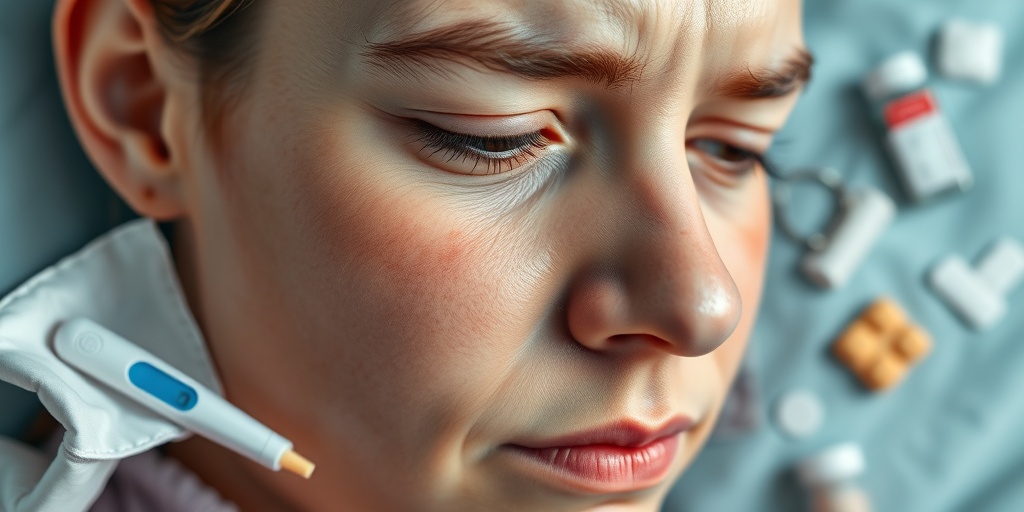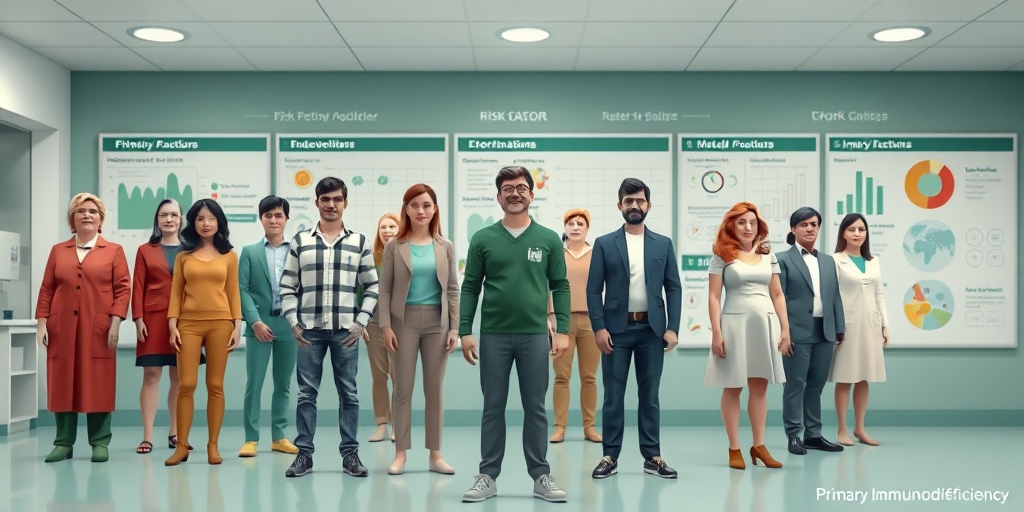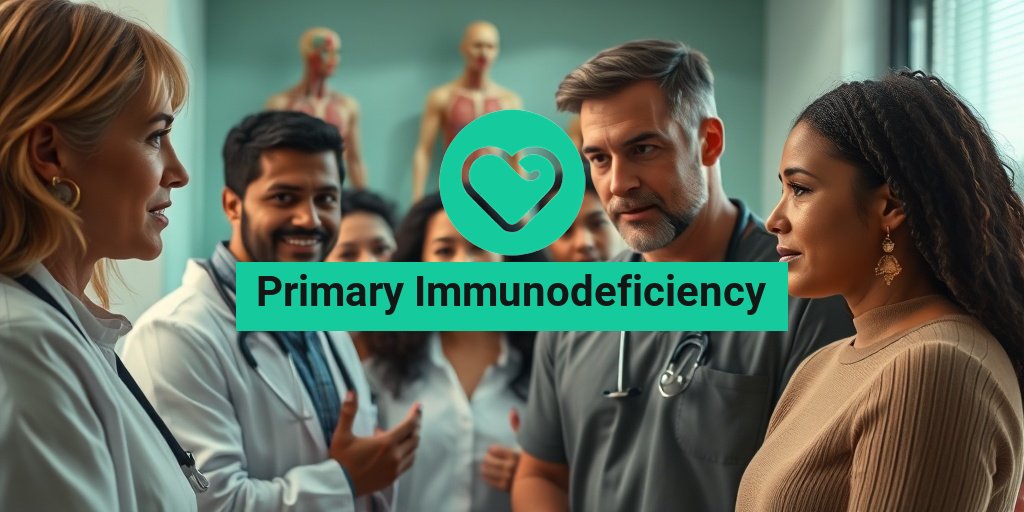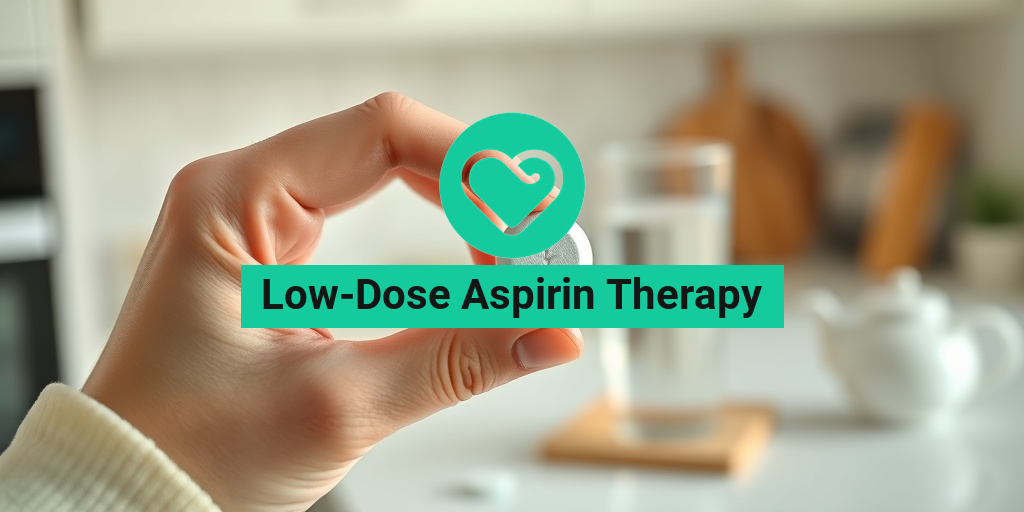What Is Primary Immunodeficiency?
Primary immunodeficiency (PID) refers to a group of more than 300 rare, chronic disorders in which part of the body’s immune system is missing or functions improperly. Unlike secondary immunodeficiency, which is acquired due to external factors such as infections or medications, primary immunodeficiency is typically inherited and present from birth. These disorders can lead to increased susceptibility to infections, autoimmune diseases, and even certain cancers.
Understanding the Immune System
To grasp the concept of primary immunodeficiency, it’s essential to understand the role of the immune system. The immune system is a complex network of cells, tissues, and organs that work together to defend the body against harmful invaders like bacteria, viruses, and parasites. When this system is compromised, as in the case of primary immunodeficiency, the body struggles to fight off infections effectively.
Types of Primary Immunodeficiency
There are several types of primary immunodeficiency diseases, each affecting different components of the immune system. Some of the most common include:
- Common Variable Immunodeficiency (CVID): Characterized by low levels of antibodies, leading to recurrent infections.
- X-Linked Agammaglobulinemia (XLA): A genetic disorder that results in the absence of B cells, crucial for antibody production.
- Severe Combined Immunodeficiency (SCID): Often referred to as “bubble boy disease,” this condition affects both T and B lymphocytes, severely compromising the immune response.
- Hyper-IgM Syndrome: A disorder where the body produces high levels of IgM antibodies but low levels of other types, leading to increased infection risk.
Each type of primary immunodeficiency has its unique characteristics and challenges, making diagnosis and treatment essential for managing symptoms and improving quality of life.
Primary Immunodeficiency Symptoms
The symptoms of primary immunodeficiency can vary widely depending on the specific disorder and the individual. However, there are some common signs that may indicate an underlying issue with the immune system. Recognizing these symptoms early can lead to timely diagnosis and treatment.
Common Symptoms to Watch For
Individuals with primary immunodeficiency may experience:
- Frequent Infections: Recurrent infections, particularly of the ears, sinuses, and lungs, are a hallmark of primary immunodeficiency.
- Unusual Infections: Infections caused by organisms that typically do not affect healthy individuals, such as certain fungi or viruses.
- Delayed Recovery: Longer recovery times from infections or illnesses compared to healthy individuals.
- Autoimmune Disorders: Some individuals may develop autoimmune conditions where the immune system mistakenly attacks the body’s own tissues.
- Growth Delays: Children with primary immunodeficiency may experience delays in growth and development due to chronic infections.
When to Seek Medical Advice
If you or a loved one is experiencing recurrent infections or any of the symptoms mentioned above, it’s crucial to consult a healthcare professional. Early diagnosis can significantly improve outcomes and quality of life. A primary immunodeficiency panel may be conducted to assess the immune system’s functionality and identify specific deficiencies.
For more detailed information and resources on primary immunodeficiency, consider visiting Yesil Health AI, where you can find evidence-based health answers tailored to your needs.
In conclusion, understanding primary immunodeficiency is vital for recognizing its symptoms and seeking appropriate treatment. With the right support and management, individuals with these disorders can lead fulfilling lives despite their challenges. 🌟

Causes of Primary Immunodeficiency
Primary immunodeficiency (PID) refers to a group of disorders caused by intrinsic defects in the immune system. Unlike secondary immunodeficiency, which is acquired due to external factors like infections or medications, primary immunodeficiency is typically genetic. Understanding the causes of primary immunodeficiency is crucial for early diagnosis and effective management.
Genetic Mutations
The primary cause of most primary immunodeficiency diseases is genetic mutations. These mutations can affect various components of the immune system, including:
- B cells: Responsible for producing antibodies, B cell deficiencies can lead to increased susceptibility to infections.
- T cells: These cells help regulate immune responses. Deficiencies can result in severe infections and autoimmune diseases.
- Phagocytes: These cells engulf and destroy pathogens. Defects can lead to recurrent bacterial infections.
- Complement system: A group of proteins that assist in the immune response. Deficiencies can lead to increased infections and autoimmune disorders.
Some of the most common genetic conditions associated with primary immunodeficiency include:
- Severe Combined Immunodeficiency (SCID): Often referred to as “bubble boy disease,” SCID is caused by mutations affecting both T and B cells.
- X-Linked Agammaglobulinemia (XLA): This condition is characterized by a lack of antibodies due to a mutation in the BTK gene.
- Common Variable Immunodeficiency (CVID): A disorder that leads to low levels of antibodies and increased susceptibility to infections.
Inheritance Patterns
Primary immunodeficiencies can be inherited in various ways, including:
- Autosomal Dominant: Only one copy of the mutated gene is needed for the disorder to manifest. Examples include Hyper-IgE syndrome.
- Autosomal Recessive: Two copies of the mutated gene (one from each parent) are required for the disorder to occur. Conditions like SCID often follow this pattern.
- X-Linked: These disorders are linked to the X chromosome and primarily affect males. An example is XLA.
Understanding the genetic basis of primary immunodeficiency is essential for genetic counseling and family planning for affected individuals.
Risk Factors for Primary Immunodeficiency
While primary immunodeficiency is primarily genetic, certain risk factors can increase the likelihood of developing these disorders. Recognizing these factors can aid in early detection and intervention.
Family History
A strong family history of immunodeficiency disorders is one of the most significant risk factors. If a parent or sibling has been diagnosed with a primary immunodeficiency, the risk of other family members being affected increases. Genetic testing and counseling can help assess the risk for future generations.
Ethnic Background
Some primary immunodeficiency disorders are more prevalent in specific ethnic groups. For example:
- Severe Combined Immunodeficiency (SCID): More common in certain populations, including those of Middle Eastern descent.
- Hyper-IgM Syndrome: More frequently observed in individuals of African descent.
Awareness of these ethnic predispositions can facilitate earlier diagnosis and treatment in at-risk populations.
Age and Gender
While primary immunodeficiencies can occur at any age, some conditions are diagnosed in infancy or early childhood. Additionally, certain disorders, like X-Linked Agammaglobulinemia, predominantly affect males due to their inheritance pattern. Understanding these age and gender-related factors can help healthcare providers monitor at-risk individuals more closely.
Environmental Factors
Although primary immunodeficiencies are primarily genetic, environmental factors can play a role in the severity and manifestation of symptoms. For instance, exposure to certain infections or toxins may exacerbate underlying immune deficiencies. Maintaining a healthy lifestyle, including proper nutrition and avoiding known pathogens, can help manage symptoms.
In conclusion, recognizing the causes and risk factors associated with primary immunodeficiency is vital for early diagnosis and effective treatment. If you suspect that you or a loved one may be affected, consult a healthcare professional for further evaluation and guidance. 🩺✨

Diagnosis of Primary Immunodeficiency
Diagnosing primary immunodeficiency (PI) can be a complex process, as the symptoms often mimic those of other conditions. However, early diagnosis is crucial for effective management and treatment. Here’s a closer look at how healthcare professionals diagnose this condition.
Understanding the Symptoms
Individuals with primary immunodeficiency may experience a range of symptoms, which can vary widely depending on the specific type of disorder. Common symptoms include:
- Frequent infections: Recurrent infections, particularly of the lungs, ears, and sinuses, are a hallmark of PI.
- Delayed recovery: Infections that take longer to heal or require more aggressive treatment.
- Autoimmune issues: Some patients may develop autoimmune disorders, where the immune system mistakenly attacks the body’s own tissues.
- Failure to thrive: In children, poor growth and development can be a sign of an underlying immunodeficiency.
Medical History and Physical Examination
The first step in diagnosing primary immunodeficiency typically involves a thorough medical history and physical examination. Doctors will ask about:
- Frequency and severity of infections
- Family history of immunodeficiency or related disorders
- Any autoimmune diseases present in the family
During the physical examination, the doctor may look for signs of chronic infections or other health issues that could indicate a problem with the immune system.
Laboratory Tests
To confirm a diagnosis of primary immunodeficiency, healthcare providers often recommend a series of laboratory tests, including:
- Immunoglobulin levels: Measuring the levels of different types of immunoglobulins (IgG, IgA, IgM) can help identify deficiencies.
- Complete blood count (CBC): This test assesses the overall health of the immune system by evaluating white blood cell counts.
- Specific antibody response tests: These tests determine how well the immune system responds to vaccines.
- Genetic testing: In some cases, genetic tests may be performed to identify specific genetic mutations associated with primary immunodeficiency diseases.
Once a diagnosis is confirmed, healthcare providers can develop a tailored treatment plan to help manage the condition effectively.
Treatment Options for Primary Immunodeficiency
While there is currently no cure for primary immunodeficiency, various treatment options can help manage symptoms and improve the quality of life for those affected. The choice of treatment often depends on the specific type of immunodeficiency and the severity of symptoms.
Immunoglobulin Replacement Therapy
One of the most common treatments for primary immunodeficiency is immunoglobulin replacement therapy. This therapy involves administering immunoglobulin (antibodies) through intravenous (IV) or subcutaneous (under the skin) routes. It helps boost the immune system and reduce the frequency and severity of infections.
Antibiotic Prophylaxis
For individuals prone to recurrent infections, doctors may prescribe antibiotic prophylaxis. This involves taking antibiotics regularly to prevent infections before they occur. This approach can be particularly beneficial for children with primary immunodeficiency.
Stem Cell Transplantation
In severe cases of primary immunodeficiency, a stem cell transplant may be considered. This procedure involves replacing the defective immune system with healthy stem cells from a compatible donor. While this treatment can be curative, it carries significant risks and is typically reserved for the most severe cases.
Gene Therapy
Emerging treatments, such as gene therapy, are being researched as potential options for certain types of primary immunodeficiency. This innovative approach aims to correct the genetic defects responsible for the disorder, offering hope for a more permanent solution in the future.
Supportive Care
In addition to specific treatments, supportive care plays a vital role in managing primary immunodeficiency. This may include:
- Nutritional support: Ensuring a balanced diet to support overall health.
- Regular monitoring: Frequent check-ups with healthcare providers to monitor health status and adjust treatment as necessary.
- Vaccinations: Staying up-to-date with vaccinations, although some live vaccines may be contraindicated.
By understanding the diagnosis and treatment options available for primary immunodeficiency, patients and their families can work closely with healthcare providers to manage the condition effectively and lead fulfilling lives. 🌟

Living with Primary Immunodeficiency
Living with Primary Immunodeficiency (PI) can be a challenging journey, but understanding the condition and adopting effective management strategies can significantly improve quality of life. Primary immunodeficiencies are a group of disorders caused by intrinsic defects in the immune system, leading to increased susceptibility to infections and other health issues. Here, we’ll explore what it means to live with PI and how individuals can navigate daily life while managing their health.
Understanding Primary Immunodeficiency
Primary immunodeficiency diseases (PIDs) are often genetic and can manifest in various ways. Some common types include:
- Common Variable Immunodeficiency (CVID)
- X-Linked Agammaglobulinemia (XLA)
- Severe Combined Immunodeficiency (SCID)
- Selective IgA Deficiency
Each type presents its own set of challenges and symptoms, which can range from frequent infections to autoimmune disorders. Understanding your specific condition is crucial for effective management.
Daily Life and Management Strategies
Living with PI requires a proactive approach to health management. Here are some strategies to help individuals cope:
- Regular Medical Check-ups: Frequent visits to a healthcare provider specializing in immunodeficiencies are essential. These check-ups can help monitor health status and adjust treatment plans as necessary.
- Immunoglobulin Replacement Therapy: Many individuals with PI benefit from immunoglobulin therapy, which helps boost the immune system. This treatment can be administered intravenously or subcutaneously, depending on the patient’s needs.
- Healthy Lifestyle Choices: A balanced diet, regular exercise, and adequate sleep can strengthen overall health. Staying hydrated and managing stress are also vital components of a healthy lifestyle.
- Infection Prevention: Being vigilant about hygiene practices, such as frequent handwashing and avoiding crowded places during flu season, can help reduce the risk of infections.
Emotional and Psychological Support
Living with a chronic condition like PI can take a toll on mental health. It’s important to seek emotional support through:
- Support Groups: Connecting with others who have similar experiences can provide comfort and understanding.
- Counseling: Professional counseling can help individuals cope with the emotional challenges of living with a chronic illness.
- Family and Friends: Open communication with loved ones about your condition can foster a supportive environment.
Preventing Infections in Primary Immunodeficiency
One of the most significant challenges for individuals with Primary Immunodeficiency is the heightened risk of infections. However, there are several proactive measures that can be taken to minimize this risk and maintain health.
Understanding Infection Risks
People with PI often experience recurrent infections due to their compromised immune systems. Common infections include:
- Respiratory infections (e.g., pneumonia, bronchitis)
- Gastrointestinal infections
- Skin infections
- Ear infections
Recognizing the signs of infection early can lead to prompt treatment, which is crucial for individuals with PI.
Effective Infection Prevention Strategies
Here are some effective strategies to help prevent infections:
- Vaccinations: Staying up-to-date with vaccinations is essential. However, some vaccines may not be suitable for individuals with PI, so it’s important to consult with a healthcare provider.
- Hygiene Practices: Regular handwashing, using hand sanitizers, and maintaining cleanliness in living spaces can significantly reduce infection risks.
- Avoiding Sick Contacts: Limiting exposure to individuals who are ill can help prevent the spread of infections.
- Travel Precautions: When traveling, especially to areas with high infection rates, taking extra precautions such as avoiding raw foods and drinking bottled water can be beneficial.
Monitoring and Responding to Symptoms
Being vigilant about health is crucial for individuals with PI. Monitoring for symptoms of infection, such as fever, fatigue, or unusual pain, can lead to early intervention. Keeping a health diary to track symptoms and any potential triggers can also be helpful.
In conclusion, while living with Primary Immunodeficiency presents unique challenges, understanding the condition and implementing effective management and prevention strategies can empower individuals to lead fulfilling lives. By prioritizing health and seeking support, those with PI can navigate their journey with resilience and confidence. 🌟

Frequently Asked Questions about Primary Immunodeficiency
What is Primary Immunodeficiency?
Primary Immunodeficiency refers to a group of disorders caused by intrinsic defects in the immune system. These conditions result in an increased susceptibility to infections and can affect various parts of the immune response.
What are the common symptoms of Primary Immunodeficiency?
Individuals with primary immunodeficiency symptoms may experience:
- Frequent infections
- Infections that are difficult to treat
- Autoimmune disorders
- Delayed growth in children
- Chronic diarrhea
What are some examples of Primary Immunodeficiency diseases?
There are numerous primary immunodeficiency diseases, including:
- Severe Combined Immunodeficiency (SCID)
- Common Variable Immunodeficiency (CVID)
- X-Linked Agammaglobulinemia (XLA)
- Hyper-IgM Syndrome
How is Primary Immunodeficiency diagnosed?
Diagnosis typically involves a primary immunodeficiency panel that tests various components of the immune system, including antibody levels and the function of immune cells.
What treatments are available for Primary Immunodeficiency?
Treatment options for primary immunodeficiency treatment may include:
- Immunoglobulin replacement therapy
- Antibiotics to prevent infections
- Stem cell transplantation in severe cases
How does Primary Immunodeficiency differ from Secondary Immunodeficiency?
Primary immunodeficiency vs secondary immunodeficiency primarily lies in the cause. Primary immunodeficiencies are genetic and present at birth, while secondary immunodeficiencies are acquired due to external factors such as infections, medications, or malnutrition.
What is the ICD-10 code for Primary Immunodeficiency?
The primary immunodeficiency ICD 10 codes vary depending on the specific type of disorder. For example, the code for Severe Combined Immunodeficiency is D81.0.
Where can I find more information about Primary Immunodeficiency?
For more detailed information, consider visiting reputable health websites or consulting with a healthcare professional who specializes in immunology.




